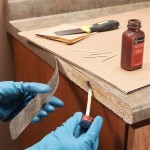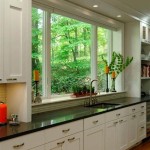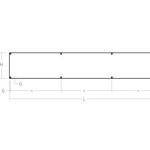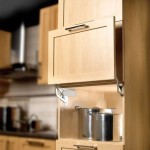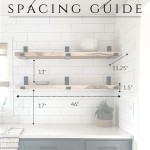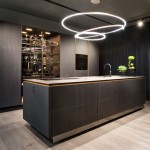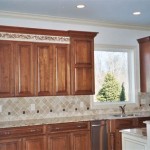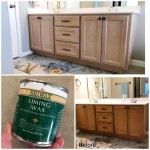Building a Bar with Kitchen Cabinets: A Comprehensive Guide
Constructing a home bar can significantly enhance the entertainment value of a living space. Utilizing kitchen cabinets for this purpose presents a cost-effective and customizable solution. Kitchen cabinets are designed for functionality and durability, making them well-suited for bar construction. This approach allows for the creation of a bar area that seamlessly integrates with existing home decor and provides ample storage for beverages, glassware, and bar accessories.
The process involves careful planning, selection of appropriate cabinets, and meticulous execution. Understanding the principles of bar design, along with the advantages and potential challenges of using kitchen cabinets, is crucial for a successful outcome. This article provides a detailed guide on how to build a bar using kitchen cabinets, from initial planning to final installation.
Planning and Design Considerations
The initial phase of building a bar involves comprehensive planning. This includes defining the bar's purpose, determining its location, and establishing a budget. The bar's purpose will dictate its size, features, and overall design. For example, if the bar is intended for casual gatherings, a smaller, simpler design may suffice. A bar designed for more formal entertaining, however, may require a larger footprint and more elaborate features.
Location is a critical factor. Considerations include accessibility, proximity to other entertainment areas, and the availability of plumbing and electrical connections. A location near the kitchen or living room may be ideal for convenience. The budget will influence the choice of cabinets, countertops, and other materials. It is essential to establish a realistic budget early in the planning process to avoid overspending.
Measuring the available space is paramount. Accurate measurements will determine the size and configuration of the bar. Sketching a preliminary design, either on paper or using design software, can help visualize the bar and identify potential problems. The design should incorporate storage needs, including space for bottles, glassware, and other bar essentials. Consider incorporating features such as a sink, ice maker, or wine refrigerator, if desired and within budget.
Selecting a style that complements the existing decor is crucial for creating a cohesive look. Options range from traditional to contemporary, and the choice should reflect the overall aesthetic of the home. Considering the layout of the cabinets is also key. Base cabinets are ideal for storage, while wall cabinets can be used above the bar to display glassware and bottles. A combination of cabinet sizes and styles can create a visually appealing and functional bar area.
Selecting and Modifying Kitchen Cabinets
Choosing the right kitchen cabinets is fundamental to the success of the bar project. Standard kitchen cabinets are generally available in a variety of sizes, styles, and materials. Stock cabinets offer the advantage of affordability and immediate availability. Semi-custom cabinets provide more flexibility in terms of size and design. Custom cabinets offer the greatest degree of customization but are also the most expensive.
When selecting cabinets, consider the material. Solid wood cabinets are durable and aesthetically pleasing but can be expensive. Plywood cabinets are a more affordable alternative that still provides good strength and stability. Particleboard cabinets are the least expensive option but are also the least durable. The finish of the cabinets should complement the overall style of the bar. Options include paint, stain, and laminate.
Modifying the cabinets may be necessary to adapt them for bar use. Common modifications include cutting cabinets to fit specific spaces, adding shelves or drawers, and installing wine racks. Removing doors from some cabinets can create open shelving for displaying bottles and glassware. Painting or staining the cabinets can customize their appearance. Adding decorative hardware, such as knobs and pulls, can further enhance the bar's aesthetic appeal.
Ensure that all modifications are made with precision and attention to detail. Using the appropriate tools and techniques is essential for achieving a professional finish. When cutting cabinets, use a saw with a fine-tooth blade to minimize splintering. When painting or staining, prepare the surface properly by sanding and priming. Consider hiring a professional carpenter or contractor for complex modifications.
Installation and Finishing Touches
The installation process involves securing the cabinets to the wall and floor, installing the countertop, and adding the finishing touches. Begin by locating and marking the wall studs. This will ensure that the cabinets are securely anchored. Use a level to ensure that the cabinets are perfectly aligned. Shimming may be necessary to compensate for uneven floors or walls.
Attach the cabinets to the wall using screws that are long enough to penetrate the studs. Use construction adhesive in addition to screws for added stability. Once the base cabinets are installed, install the countertop. Countertop materials include granite, quartz, marble, and laminate. Choose a material that is durable, water-resistant, and complements the overall style of the bar.
After the countertop is installed, connect any necessary plumbing for a sink or ice maker. This may require hiring a licensed plumber. Install any electrical outlets or lighting fixtures. This may require hiring a licensed electrician. Once the plumbing and electrical connections are complete, add the finishing touches. Install a backsplash to protect the wall from spills. Consider adding decorative trim or molding to enhance the bar's appearance.
Stock the bar with beverages, glassware, and bar accessories. Organize the storage space to maximize efficiency. Consider adding a bar mat to protect the countertop from spills. Adding comfortable seating will complete the bar area and create an inviting space for entertaining. Regular cleaning and maintenance will ensure that the bar remains in good condition for years to come.
Key Considerations for Plumbing and Electrics
Integrating plumbing and electrical systems into a home bar built with kitchen cabinets demands meticulous planning and execution. Often, these aspects can significantly influence the location and overall design of the bar. The proximity to existing plumbing lines and electrical outlets can substantially reduce installation costs and complexity. Conversely, extending these utilities can add to the overall expense and require professional expertise.
When planning for plumbing, consider the necessity of running water for a sink, ice maker, or dishwasher. This involves connecting to the main water supply and draining waste water. The drain line must have a proper slope to ensure effective drainage and prevent backflow. It is crucial to adhere to local plumbing codes and regulations. Consulting with a licensed plumber is advisable to ensure a safe and compliant installation.
Electrical considerations include providing power for lighting, appliances, and other accessories. Assessing the electrical load is crucial to ensure that the existing circuits can handle the additional demand. Overloading circuits can lead to tripped breakers or, in severe cases, electrical fires. Dedicated circuits may be necessary for high-power appliances such as refrigerators or ice makers. Ground fault circuit interrupters (GFCIs) should be installed to protect against electrical shock in areas prone to moisture.
Wiring should be concealed within the cabinets or walls to maintain a clean and professional appearance. Consider incorporating under-cabinet lighting to illuminate the countertop and create an inviting ambiance. Installing dimmers allows adjusting the lighting to suit different moods and occasions. A thorough inspection by a qualified electrician is essential to verify the safety and compliance of the electrical installation.
Countertop Selection and Installation
The countertop serves as a focal point for a bar and significantly influences both its aesthetic appeal and functionality. Selecting the right material requires careful consideration of durability, maintenance, cost, and overall design. Common countertop materials include granite, quartz, marble, butcher block, and laminate. Each material offers unique advantages and disadvantages.
Granite is a natural stone known for its durability, heat resistance, and unique patterns. It is a premium option that adds a touch of elegance to any bar. Quartz is an engineered stone composed of quartz crystals and resin. It is non-porous, stain-resistant, and available in a wide range of colors and patterns. Marble is another natural stone valued for its beauty and sophistication. However, it is relatively soft and porous, requiring more care and maintenance.
Butcher block is a wooden countertop that offers a warm and rustic look. It is durable but requires regular sealing to prevent water damage and bacterial growth. Laminate is a cost-effective option that comes in a vast array of colors and patterns. It is relatively easy to clean but is less durable than natural stone or engineered stone.
Installation of the countertop involves precise cutting, fitting, and securing. The countertop must be properly supported by the cabinets and level to ensure stability. Natural stone countertops are heavy and require professional installation. Laminate countertops can be installed by experienced DIYers. The edges of the countertop should be finished to prevent chipping and create a polished look. Consider adding a decorative edge profile to enhance the bar's aesthetic appeal.
Maximizing Storage and Organization
Effective storage and organization are crucial for a functional and efficient home bar. Kitchen cabinets provide a solid foundation for creating organized storage solutions. Optimizing the available space involves incorporating various storage accessories and implementing strategic organization techniques.
Consider installing pull-out shelves to maximize access to items stored at the back of cabinets. Wine racks can be integrated into the cabinet design to provide dedicated storage for wine bottles. Glass racks suspended from the upper cabinets offer a convenient way to store stemware. Drawers can be used to store bar tools, napkins, and other small accessories. Dividers and organizers can help keep drawers neat and prevent items from shifting.
Utilize vertical space by installing shelves above the bar to display bottles, glassware, and decorative items. Adjustable shelves offer flexibility in accommodating items of different sizes. Consider adding lighting to illuminate the shelves and create a visually appealing display. Labeling shelves and drawers can help identify the contents and make it easier to locate items quickly.
Maximize the use of cabinet doors by installing hooks or racks on the inside to store bar towels, bottle openers, or other accessories. A magnetic knife strip can be mounted on the side of a cabinet to keep knives within easy reach. Consider adding a trash can pull-out to conceal the trash and maintain a clean and organized bar area. Regularly decluttering and reorganizing the bar will help maintain its functionality and appearance.

25 Creative Built In Bars And Bar Carts Kitchen Design Home Kitchens Renovation
:strip_icc()/101952329-b99a10e6ebf045ae9d39b85a197fce05.jpg?strip=all)
22 Stylish Wet Bar Ideas That Make Serving Drinks A Delight

Drinks Cabinet Ideas Design Your Dream Home Bar On A Budget Find Kitchen Inspiration Blog Sigma 3 Kitchens

Raising The Bar Diy Home Building A Kitchen Basement Designs

Home Wet Bar Ideas Cabinet Perfect

Diy Corner Coffee Bar Build Wine Storage Floating Shelves Cabinets And More Make It With Kate

Diy Coffee Bar Cabinet Kitchen Renovation The Inspired Work

3 Tips To A Perfect Dry Bar Jen Talbot Design

S Diy Bar Cabinet Kitchenette Shrimp Salad Circus

Build A Home Bar With Rta Kitchen Cabinets Cs Hardware Blog
Related Posts

